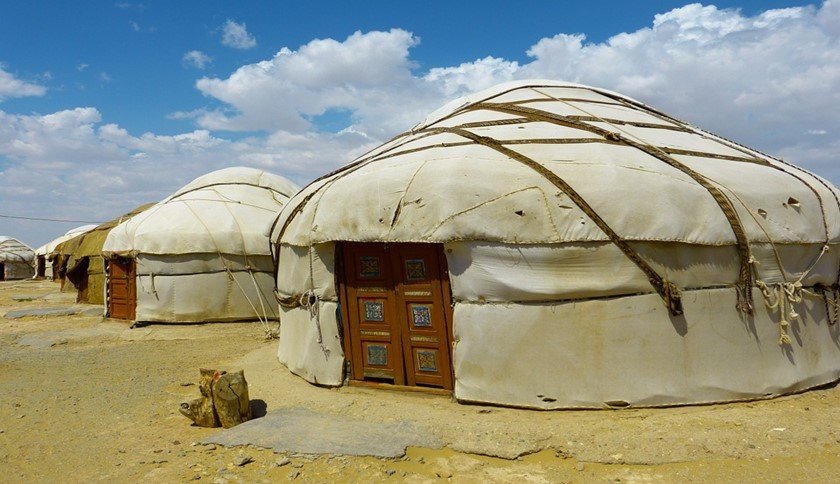Have you ever thought of getting away from maintaining a large house and enjoy a natural house setup then a yurt living might be suitable for you. A yurt is a form of traditional circular tent-like structures which acted as a home for the nomads in Central Asia living high in the mountains.
Yurts are great for those who want small living area, a getaway, or for camping.
Pros:
1. Enjoy nature: Living in a yurt enables you to experience nature and love the surrounding area. You can listen to birds singing, watch the stars at night from the comfort of your bed, or watch the sunset.
2. Peaceful: A yurt life is very peaceful, quiet, and cool just like living in a cottage. It is a great place to live in and you can invite our friends over.
3. Easy to assemble: Within a couple of days, you can assemble this structure and start living there. It makes one easily appreciate the simple things
4. Mortgage-free house: You don’t have to incur a lot of expenses in constructing a yurt compared to when building a home. It is also cheaper to live in a yurt than in an apartment. Water and electricity bills are less.
5. Opportunity to own a home: Yurts gives you the opportunity to own a home for a fraction of the total cost of purchasing a house.
6. Environmentally friendly: Yurts have less impact on the land. There is no foundation needed.
7. Flexible walls: Modern yurts are designed with flexible walls that can be 2-inches thick to allow rapid heating and cooling variations inside the building. Fiberglass matt insulation together with bubble and foil can be used
8. Fewer taxes: Living in a yurt is economical. You can pay fewer taxes compared to taxes paid for a typical house.
9. Durable and customizable: You have an option to choose the materials and the size of your yurt. If you need a small yurt, you can choose how small you want to go.
10. Heating and cooling costs: Due to its open concept and size, you can put a stove at the center to heat the entire yurt evenly during summer. This provides warmth to your home within a short time. The heating and cooling costs are very low.
Cons:
1. Safety of the heating system: If you’re living in a fabric yurt, an open flame may be very risky. If using solid wall designs, flame retarding materials and fire-rated wall boards can be used to minimize the risk.
2. No privacy: Yurts have an open design and this impacts the privacy of the room. If you have a large family, it may be difficult for everyone to have their own space.
3. Weather issues: If your yurt is in an open area, then the wind is going to be an issue. It can easily blow off your roof. Constant rainfall in the area can make the roof leak and your yurt may smell for a couple of days.
4. Heating the place: It can take a lot of time and effort to heat the place. In winter the yurt can become an icebox thus you need to wake up multiple times at night to stoke the fire.
5. Hot in summer: During summer periods, it is too hot to keep the fire going on. Many people will prefer cooking and wishing very early in the morning or in the evening with the hot airtight woodstove.
6. Lots of hornets: Be ready to deal with hornets in your home. You may find more of them finding their way into your home and not getting out.
7. No carpeting: You should avoid using carpets in a yurt to avoid ants, tick, and a spider infestation. Even though you tightly seal the walls and the roofs, insects will always find a way to get inside.
8. No standard glass window: You can’t use a standard glass window in a flexible wall yurt. Only single-sheet heavy plastic windows can be installed. These windows transmit a lot of heat or cooling between the interior and the exterior.
9. No storage space: Due to the small size of the yurt, you only have enough storage space for the basic stuff. No extra storage room.
10. Electrical and plumping issues: You need to have interior walls for you to install electricity cables through the walls. You need the composting toilet in building the yurt in remote areas.



